Composition in photography is how you arrange the elements within an image. Learn the best tips and techniques to improve your photos.
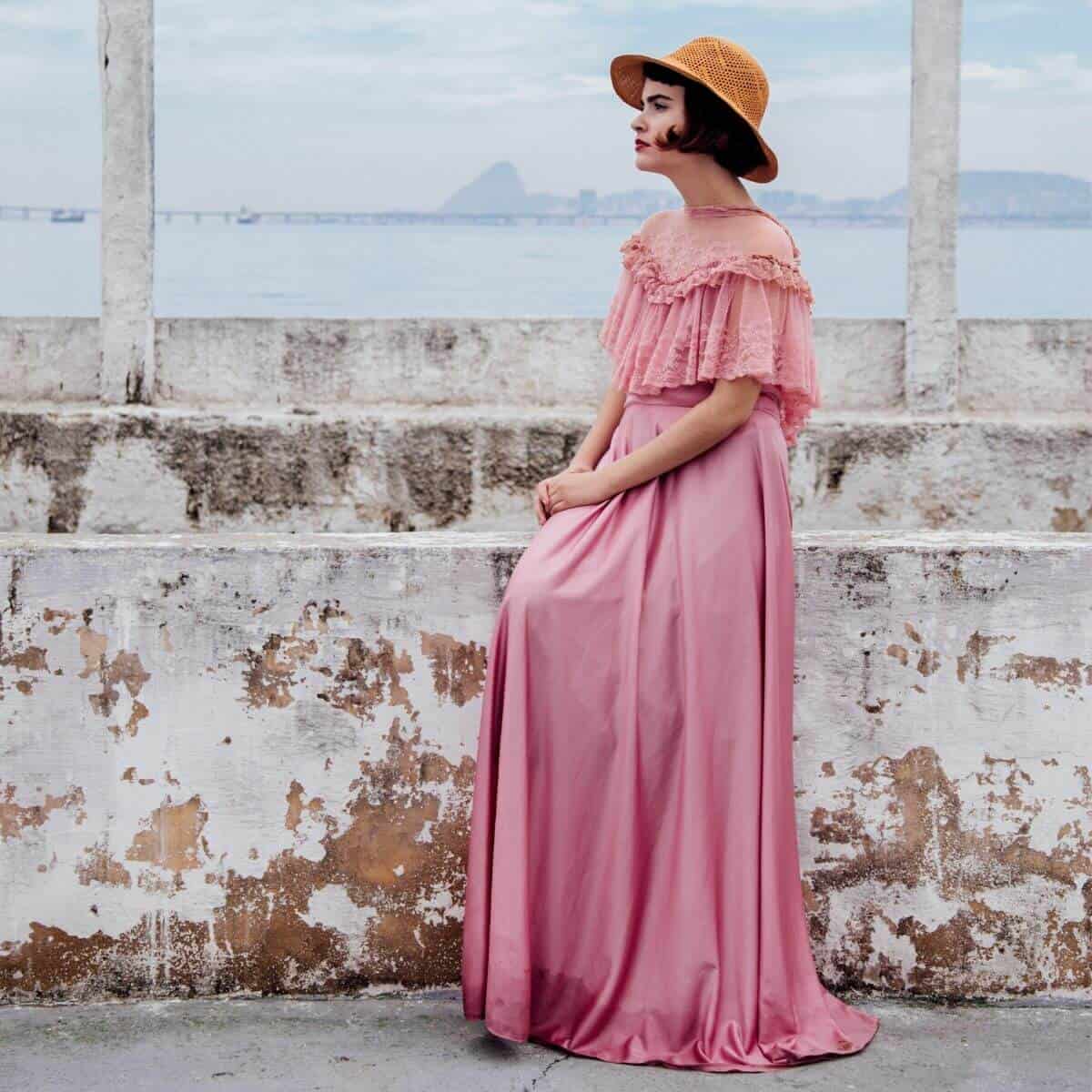
Photography composition is the organization of elements in a frame.
There are different composition techniques you can use to create an eye-catching image.
An understanding of photography composition will separate you from other photographers.
The rules and techniques are guidelines. Photography is an art, so the rules are breakable.
The following is your complete guide to composition techniques, rules, and tips. Use them to become a better photographer.
1. Rule of thirds

The rule of thirds is a compositional guideline that breaks the frame into thirds. It divides the image into nine equal parts.
You can form the grid in your camera or imagination.
The four points where the lines intersect are the points of interest.
You place the subject on the left or right third of the image and leave the other two-thirds with negative space.
The intersecting points create balance and visual interest. Instead of a static or boring image, you have an engaging one.
2. Leading lines

Leading lines are one of the best photography composition techniques.
Learn how to use it because it allows you to guide a viewer toward a subject or visual anchor.
Leading lines can be noticeable or subtle. The key is finding elements to guide a viewer.
The four types of leading lines are as follows:
- Horizontal lines
- Vertical lines
- Diagonal lines
- Converging lines
Leading lines are excellent for all types of photography.
It allows you to tell a story and directs the focus of the image. Also, straight or curving lines work well.
It’s a technique that makes a significant difference in the quality of your photos.
3. Isolate the subject

Subject isolation removes distractions and clutter. It keeps the focus on your subject, creating an engaging image.
You can isolate your subject with a shallow depth of field or find a location with a minimal background.
Distracting elements pull the attention away from the subject. So, use subject isolation to capture a compelling photo.
Lights and other things in the background are blurry, creating a soft and creamy look.
4. Shoot from different angles
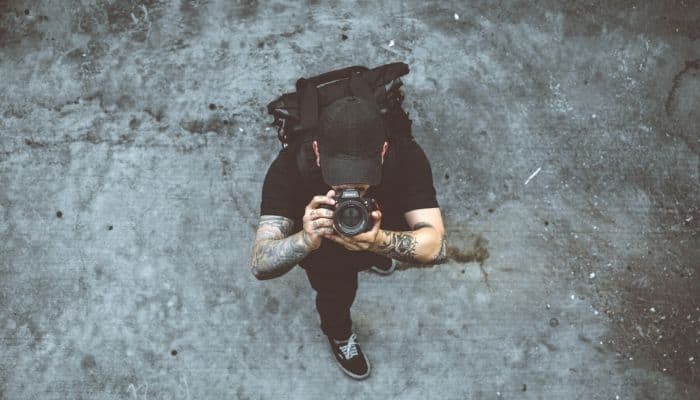
One of the best ways to add interest to your photos is to change the perspective.
Before you press the shutter button, look at the scene and try different viewpoints.
Shoot from a high, low, or straight-on angle to capture a mix of photos.
Finding the perfect point of view means you must move around and get creative.
Shooting from the same perspective is comfortable. But getting out of your comfort zone will lead to exceptional images.
Get close, far, low, and high. It results in stunning and compelling compositions.
5. Rule of space

The rule of space is also known as leading space or lead room.
It states that there must be negative space in the direction a subject is facing or moving.
The rule of space implies that there’s room ahead of the subject to move.
It prevents a feeling of tightness and restriction in an image. Also, it gives the picture a sense of direction, motion, and a natural flow.
Use the rule of space to make your photos more dynamic.
6. Rule of odds

The rule of odds is a compelling and subtle compositional technique.
It states that an odd number of subjects is more interesting than an even number.
The concept applies to portraits, wildlife, landscapes, food, pets, and products.
It’s a rule that can benefit your photography, but you can break it.
If you’re shooting family photos with an even number of people, you can skip the rule of odds.
If you want to use it, separate the family into two groups of odd numbers.
The rule of odds is an excellent technique when you can stage a scene.
7. Symmetry

Symmetry creates beautiful compositions. It can take a mundane subject and make it fascinating.
Symmetry is a form of balance, as both halves of an image hold the same weight. It can be vertical, horizontal, diagonal, or radial.
Many objects and buildings have natural symmetry. You can also use reflections to capture a symmetrical image.
Most symmetrical photos are mirror images, but they can be imperfect.
The key is for both halves of a photo to have equal weight or value.
Symmetry is all around you. Take a look at nature, architecture, cars, and streets. It creates balance and a sense of peace.
8. Fill the frame

Filling the frame means positive space takes up most or all of the image. Positive space is the subject and focus of an image.
You can use it by getting close to your subject, using a long focal length, or cropping the image.
Filling the frame is a compositional technique that removes distractions in the background.
You can use it to guide a viewer’s focus on the subject and enhance simplicity.
It also makes a viewer feel closer to the subject, creating a strong emotional response.
9. Triangles

Triangle composition is a must-know technique because you can find the shape everywhere.
The triangle is a dynamic and powerful shape. You can use it to make an image feel stable or unstable.
It also creates direction, momentum, and orientation.
A way to use the compositional technique is by grouping three points in a frame. You can also use lines to create a triangular shape.
The golden triangle is a part of the triangle composition. It works like the rule of thirds.

Divide the frame with a diagonal line from one corner to another. Then, draw a line from the two remaining corners to the diagonal line.
The two points where the lines meet are the points of interest. So, place your main subject on one of the points to use the technique.
The golden triangle creates harmony and balance within your photo.
Triangles are an excellent compositional tool for creating striking images.
10. Frame within a frame
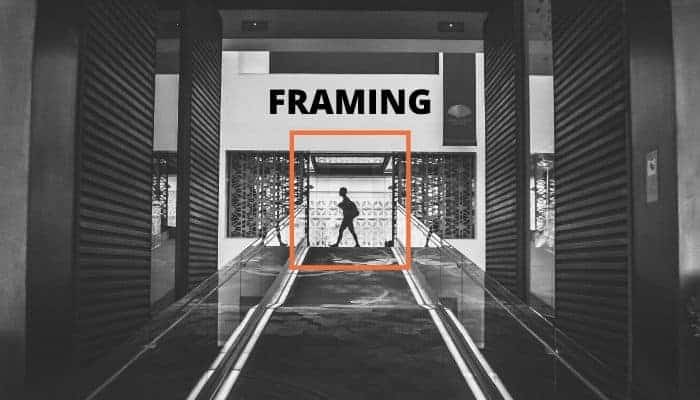
A frame within a frame is a powerful photography composition technique.
The first frame is the border, and the second is any element that frames your subject.
It’s a technique that artists, photographers, and cinematographers use.
It directs a viewer’s focus, adds depth, and creates context.
When setting up a scene, find objects, shapes, and elements in a photo to frame your subject.
Also, a frame can be round and incomplete. Not all frames are squares or rectangles.
The goal is to border a subject to create interest.
It takes thought, time, and patience. But the results are compelling and fascinating.
Use framing to become a better photographer.
You can highlight or isolate the focus of the image and create depth or an observer’s perspective.
11. Patterns

Patterns are attractive and harmonic. The repetition of elements creates dynamic and eye-catching photographs.
Patterns can be in colors, shapes, lines, or tones. Examples of where to find them include nature, architecture, and streets.
You can use patterns as the focal point or background in an image.
Try different perspectives, combine patterns, and fill the frame.
It’s an excellent way to capture unique and striking images.
12. Balance elements
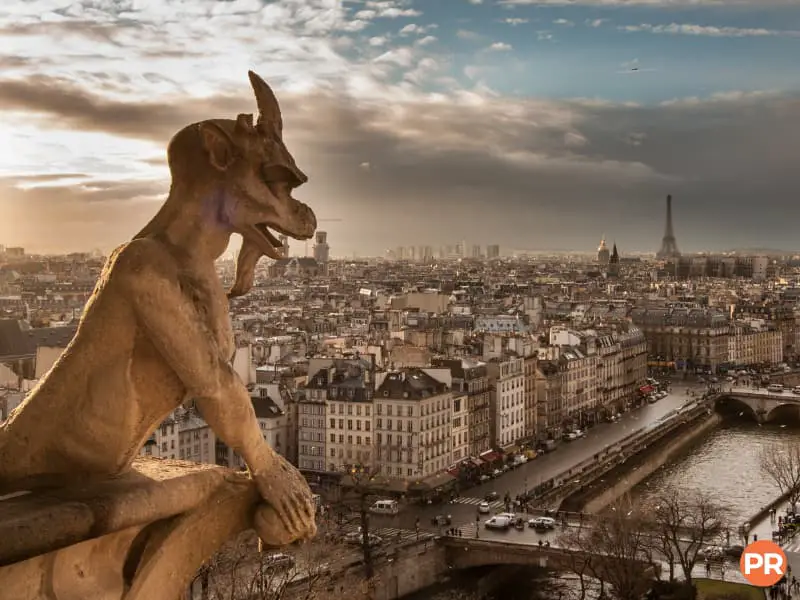
Balancing elements creates visual equilibrium. It’s an excellent technique when placing the main subject off-center.
You can use it with other composition techniques like the rule of thirds.
Instead of leaving a part of the image empty, balancing elements evens the visual weight.
It does it without taking the focus away from the main subject.
If the focal point is on the right side of the frame, add a smaller element on the left side. Both sides will achieve a visual balance that’s aesthetic.
13. Layers

Layers add depth to your images and overcome the two-dimensional limitations of photography.
Use the foreground, middle-ground, and background to create a three-dimensional feel.
You can capture fascinating pictures that catch a viewer’s attention with layers.
It’s an excellent way to add a sense of the location. It immerses the viewer in the scene.
14. Juxtaposition

A juxtaposition is a compositional tool that focuses on elements with contrast.
Two or more subjects in the frame must have strong visual weight. It causes a viewer to look at them at the same time.
A juxtaposition is excellent for storytelling and capturing images that stand out.
Get creative and find ways to photograph a juxtaposition.
Several examples include young and old, classic and modern, wealth and poverty, and lines and circles.
You can find juxtapositions everywhere. Use the technique to keep a viewer’s interest in your photograph.
15. Golden ratio
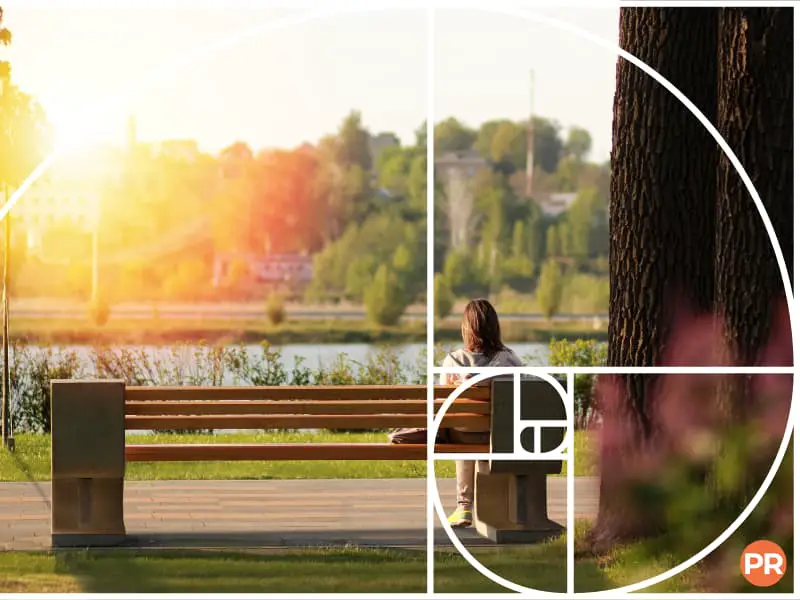
The golden ratio is also known as the golden number or proportion. It’s a ratio between two numbers equal to about 1.618.
Also, the golden ratio relates to the Fibonacci sequence, where you add each number to the last.
The golden ratio is a way to create a harmonious and aesthetic composition. You can use the phi grid or Fibonacci spiral.
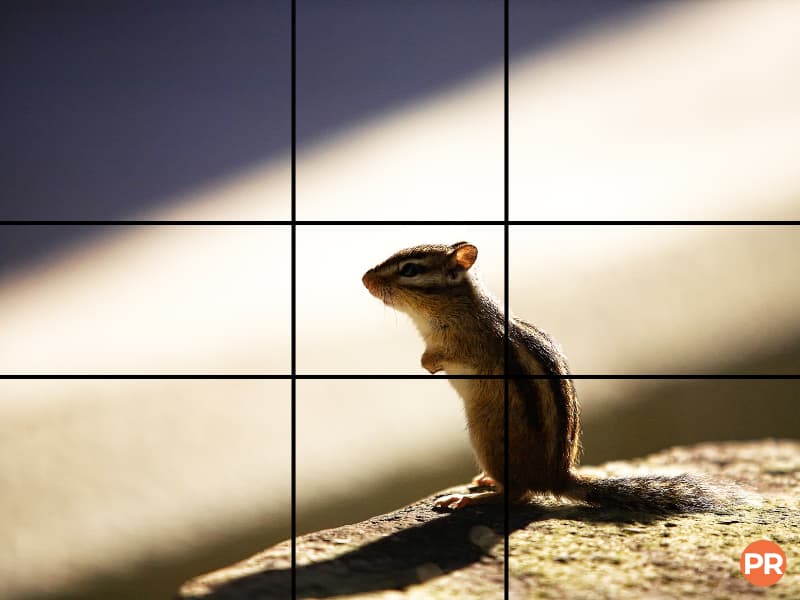
The phi grid is like the rule of thirds, but the center lines are closer together. Think of the rule of thirds as a simplification of the golden ratio.
Frequently asked questions about composition in photography
Why is composition important in photography?
Composition is essential in photography. It creates a sense of flow, balance, and direction. It also guides a viewer to the visual anchor or main subject. Use compositional techniques to capture eye-pleasing images.
Can you break the rules of composition?
The rules of composition are guidelines. So, you can break the rules. It can lead to creative results and help you grow as a photographer.
What are the five basic compositional rules in photography?
The five basic compositional rules are leading lines, the rule of thirds, negative space, horizon line, and symmetry. Each is a must-know technique for photographers.
Conclusion
Get a viewer’s attention with photography composition techniques. It’s the key to a dynamic, beautiful, and creative image.
Good photography composition guides a viewer’s eyes and tells a story.
Use composition techniques as a starting point. You can add your creative touch from there to create a powerful photograph.
Related: The Best Manfrotto Tripods
Featured photo by Unsplash.

Comments are closed.